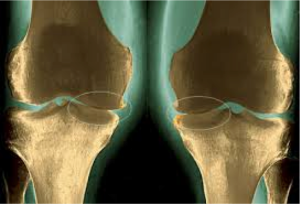So we’ve all become runners during the lockdown it would seem. See I told you it was fun. But not just that. We’ve decided we want to be really fast runners overnight that can run almost every day. Never mind the fact of not having ran in years or in some cases ever. Meh! Let’s just go for it. I am a fairly non confrontational kind of guy, happy to be somewhere near the fence and not get too worked up about most aspects of an already stressful world. But we all have our loves in life. For me that’s family and running. Ok, and cold beers. I embrace the opportunity of time with them all but especially the opportunity of a good debate about the myth that running is bad for your knees. And it comes up time and time again during my clinic day. “My doctor said I should give up running”. ” I was told I shouldn’t run on the roads with the state of my knees”, “I was told I’d need a knee replacement by the time I’m 40”. Jeez this running thing we’ve done since the start of time sounds pretty dangerous. Traditionally running gets a hard time usually amongst the non running community with the pre-programmed belief that you’re going to run into trouble down the line with osteoarthritis (a terrible and also inaccurate pun).

It is estimated that 60-70% of running related injuries are due to training error. This can mean a variety of things: typically too much too soon; or too many higher intensity session; poor planning; inadequate recovery; or a lack of specificity, as well as many other whacky possibilities, some of which I’ve been guilty of myself. Coincidentally about 60-70% of my patient caseload during the first two weeks of clinic work since the COVID19 pandemic were running related injuries. Once we delved into the assessment it became apparent that 100% of them were due to training error.

While there is evidence that running can have an immediate effect in reduction of cartilage thickness this is only temporary, with levels returning to normal thickness soon after. But it would explain how training error can arise if that next sessions comes around quicker than the knee joint may be ready for. But running is unique in that it is the cyclical loading of running that is in fact good for the joint. This type of loading elicits a cellular response that gives rise to positive effects on cartilage. Knees actually like it once you don’t over do it. Much like I enjoy a cold beer, too many over a short period of time and I’ll suffer and swear to never drink again. But spread out over a longer time period and the outcome is much more enjoyable. And you’ll maybe still feel like another the next day. But don’t let this drinking analogy be the deciding factor in putting this debate to rest. What does the evidence say?
A 2017 systematic review looked at the incidence of knee and hip osteoarthritis in three different groups: recreational runners, elite/competitive runners and non runners. The results were interesting and maybe somewhat surprising. The prevalence of osteoarthritis was highest in the elite runners (13.5%), then the control group (10.2%) and finally the recreational runners (3.5%). So based on these findings of over 1,000 subjects someone who doe snot run at all actually has a greater chance developing knee osteoarthritis than the average recreational runner like you or I. But what about the elite runners who make of the tiniest percentage of world runners who had slightly higher incidence? Well it was exactly that: only slightly higher. Plus they’d had the benefits of being much healthier while also enjoying the added free bonus features of exercise in the process. But back to the main finding: that non runners had higher incidence of osteoarthritis than recreational runners. Let that sink in for a moment. This demonstrates how exercise is chondroprotective; it increases glycosaminoglycan content improving the quality of cartilage. It also shows how adaptable cartilage can be with exercise and indeed running associated with less incidence of knee osteoarthritis. Motion is lotion!
Lo et al (2013) concluded that running does not increase symptoms of pain or radiological structural progressions in people with knee osteoarthritis. In fact runners had more improvement when compared with non runners. The long term follow up studies may also surprise you with a 25 yr follow up showing a 54% reduction in knee surgery related to osteoarthritis in runners (Timmins et al). Another 2018 longitudinal study compared knee osteoarthritic changes in runners and non runners. They measured changes from 1984 to 2002. While runners initially had a 6.7% incidence of knee OA in 1984 compared to 0% for non runners, that figure changed in 2002 to 20% for runners and to 32% for non runners.
I have been running for 11 years. Over this time I have ran 15 marathons, 4 ultra marathons, and a unique recent solo 65km charity run. Granted I’m relatively young in the sport of endurance running (although at 37 now officially a masters runner) but the days I’ve missed training due to injury I could count on one hand, one finger in fact, this directly related to my own training error (and stubbornness; a quality I think crucial for success in this game). More does not mean better. Does Eliud Kipchoge regularly run close to his marathon PB during training runs? I may be wrong but I doubt it. Yet some of us amateurs are doing this far too regularly. Consistency brings good results, not running hard constantly looking to beat a certain strava segment or set a weekly 5km personal best. Your running plan should reflect this. Now let’s help spread the word that running is likely not the cause for the development of knee osteoarthritis.
